EDITOR’S NOTE: When creating your product pages, you want to make sure that you optimize for SEO as well as user experience. Because who is going to buy your products if they can’t find them in the first place?! All good product pages need to start with the basics: catchy and descriptive titles, unique descriptions, high quality photos, and optimized metadata/alt text. Next you want to add structured data with schema. This helps users easily find your product and attracts clicks. Lastly, test your product pages to make sure they load quickly and encourage readers to buy. If you have any questions about product pages or would like us to create some for you reach out to us at The BBS Agency, we’d love to help you out!
Besides optimizing your product pages for user experience, you want to make sure these pages are as good as possible for SEO as well. Obviously, you might think. In this post, we’ll show you a couple less obvious — at least for most website owners — elements of product page SEO and tell you why it’s so important to take these things into account.
Pro tip:
1. The basics of product page SEO
A product page on an e-commerce site or online store is a page as well, so all the SEO things that matter for your content page, go for product pages as well. We could go even more into detail when discussing product page SEO, but for now, this will be your basic optimization. If you offer less than exciting products on your site, you may also want to read our post on SEO for boring products. But first:
- Add a great title, focusing on the product name — including a manufacturer name, if applicable. If your product is, for instance, a small part of a larger machine (screw, tube), include the SKU as well. People might search that specific.
- Add a proper, unique description of the product. Most of the times, that isn’t the description the manufacturer shipped with the product. That description might be used on hundreds of websites, only to be duplicate content and a sign of low quality for your website (to Google). Prevent duplicate content due to manufacturer descriptions at all times. If all your content (content pages, category pages, blog) is unique, and the content used on thousands of product pages isn’t, most of your site isn’t. Think about that and don’t take that lightly. Google’s collection of black and white animals is waiting for you. Create unique content.The Yoast WooCommerce SEO plugin comes with a product-specific content and SEO analysis that helps you produce great product descriptions.
- Add an inviting meta description. Usually, a product page contains a lot of general information as well, varying from dimensions to terms of service. To avoid Google using that unrelated text in a meta description, you want to add a meta description to your product pages, even more than to content pages. We often see that meta descriptions are added in some kind of templated way, where just the product name is changed per product. That’s ok to start with, but ideally, all meta descriptions are unique.
- Pick a great, easy to remember URL for your product pages.
- Add high-quality, well-optimized images with proper ALT text. Include the product name in at least the main product image. This will help you do better in visual search. Also, don’t forget video — if applicable.
- Add all the things mentioned in our Product Page UX post. UX is an important part of holistic SEO.
Read more: Write great product descriptions with WooCommerce SEO »
2. Add structured data for your products and get rich results
Structured data is an essential part of a modern SEO strategy. You can’t do without structured data for your product pages anymore. There is specific Product Schema that helps you get highlighted search results, so-called rich results. In addition, you’d better mark up the reviews of your customers with Review structured data. All of this will make your product page stand out and increase the chance a potential customer clicks on your link in the search results.
The importance of this for your product page SEO is that the major search engines came up with this markup, not the W3C consortium. Google, Bing, Yahoo, and Yandex agreed upon this markup, so they could identify product pages and all the product elements and characteristics more easily. Why would they want that? So they could a) understand these pages a lot better and b) show you rich snippets like this:

The Product schema tells the search engine more about the product. It could include characteristics like product description, manufacturer, brand, name, dimensions, and color, but also the SKU we mentioned earlier. The Offer schema includes more information on price and availability, like currency and stock. It can even include something called priceValidUntil to let search engines know that the price offer is for a limited time only.
Many options to add structured data for your product page SEO
Schema.org has a lot of options, but only a limited set of properties are supported by search engines. For instance, see Google’s page on product page structured data to see what that search engines expect in your code and what it can do with it.
So this is why you want to add Schema.org data for product page SEO: easier to recognize for Google, and it makes sure to include important extra’s in Google already. If you have a WooCommerce shop, our WooCommerce SEO plugin takes care of a lot of this stuff behind the scenes.
Another reason to add it is to manage expectations from customers. Your visitor knows your price up front and knows that the product is in stock. Your potential client can even see how well-regarded your product or service is by looking at those beautiful stars in search. How’s that for user experience! And that brings us to number three.
Keep reading: Rich results, structured data and Schema: a visual guide to help you understand »
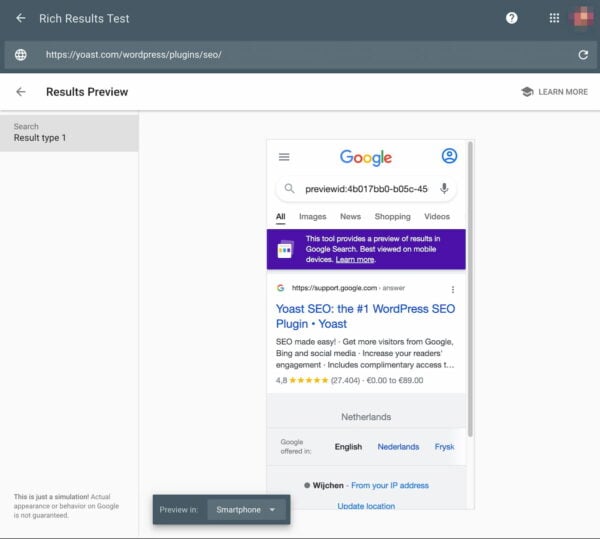
3. Add real reviews
According to Pew Research, 93% of US consumers check reviews before buying anything online. Although not everyone trusts online reviews – research says they are probably right -, they can be very helpful.
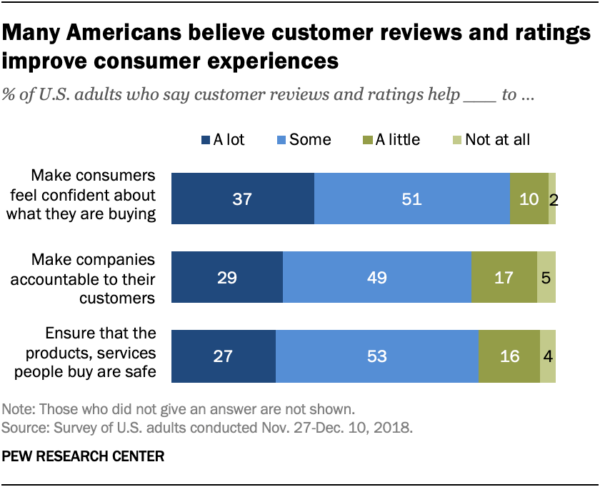
And if you are a local company online reviews are even more important. Most reviews tend to be extremely positive, but it might just be the negative reviews that give a better sense of what is going on with a company or product.
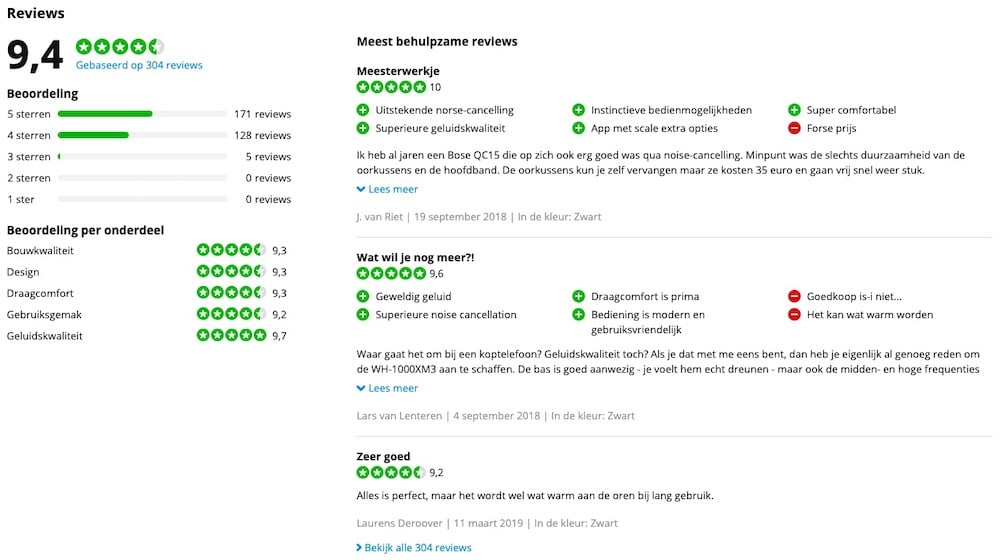
Try to get your customers to leave reviews and show them on your product page. Do you get negative reviews? Contact the writer, find out what’s wrong and try to mitigate the situation. Maybe they can turn their negative reviews into positive ones. And you’ve gained a great new insight into your work. Here’s how to grow your business with ratings and reviews. In addition, getting awesome testimonials is another way of showing your business means business.
Be sure to mark up your reviews and ratings with Review and Rating schema so search engines can pick them up and show rich results in the search results pages.
4. Make your product page lightning fast
People don’t like to wait. Waiting for a page to load costs money. In today’s mobile-focused world, every second counts. Even more so if you spent a lot of time and energy trying to get that potential customer to your product page in the first place. People expect a fast page and Google does so too. Of course, there’s a lot you can do. Here’s a small collection of posts that’ll you get started:
- How site speed influences SEO
- How to check site speed
- Improving site speed: Tools and suggestions
- Improving your Core Web Vital scores
5. User test your product page
Looking at numbers in Google Analytics, Search Console or other analytical tools can give you a lot of insights into how people find and interact with your page. These insights might help you make changes to improve the performance of the page even more. While it’s essential to keep an eye on your product pages, there’s another way of ensuring the page is as awesome as it can be: user testing.
In their 2021 Product Page UX research project, the Baymard Institute found that “the average site has 24 structural UX issues on its product pages, and only 18% of the 60 top-grossing US and European e-commerce sites have a “good” or “acceptable” product page UX performance. The vast majority of benchmarked sites — 82% — have a “poor” or “mediocre” performance. And no sites have a “state of the art” product page UX performance.” You can read that fascinating study on their Product Page UX site.
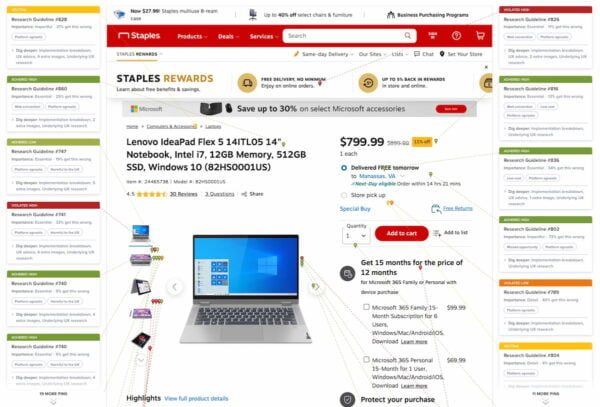
There are loads of issues to check out, from terrible use of images, including non-functioning galleries to bad handling of out-of-stock products. It also seems that many sites fail to provide accurate shipping information and return information, which leads to trust issues – see the bonus item next in this article.
While you compare your product pages to external user research, don’t forget to do your own user testing! Doing proper research will give you eye-opening results that you probably wouldn’t have found yourself.
Bonus: Build trust and show people you are for real
Getting a stranger to buy something on your site revolves a lot around trust. Someone needs to know you are for real before handing you their hard-earned money, right? Google puts a lot of emphasis on the element of trust — it’s all over their famous Search Quality Raters Guidelines. The search engine tries to evaluate trust and expertise by looking at stuff like online reviews, the accolade a site or its authors receive, et cetera.
One of the most important things to come out of that is that you should really have your About us and Customer service pages in order. So be sure that people can easily find your contact information, plus information about returns and shipping, payment, privacy et cetera. Don’t forget!
Be serious about your product page SEO
If you’re serious about optimizing your product page, you shouldn’t focus on the regular SEO and user experience alone. You’ll have to dig a little deeper into the other aspects of the product page in your online store. For instance, add Product and Offer Schema, so Google can easily index all the details about your product and show these as rich results in search result pages. Make your product pages load super fast, add user reviews and try to enhance the trustworthiness. Don’t forget to test everything you do!
Need a helping hand? Be sure to check out our Ecommerce SEO training course. Learn what ecommerce SEO entails, how to optimize your site and boost your online presence. Want to get your products ranking in the shopping search results? We’ll tell you how. Start your free trial lesson today! Full access to Yoast SEO academy is included in Yoast SEO Premium.
Check out our overview of product page must-haves
To help you stay on top of your product pages, we’ve created a PDF that you can download and use to optimize your product pages whenever you have the time. Most of what’s been discussed in this blog post can be found on this PDF, plus more! Just click on the image to go to the PDF and download it.
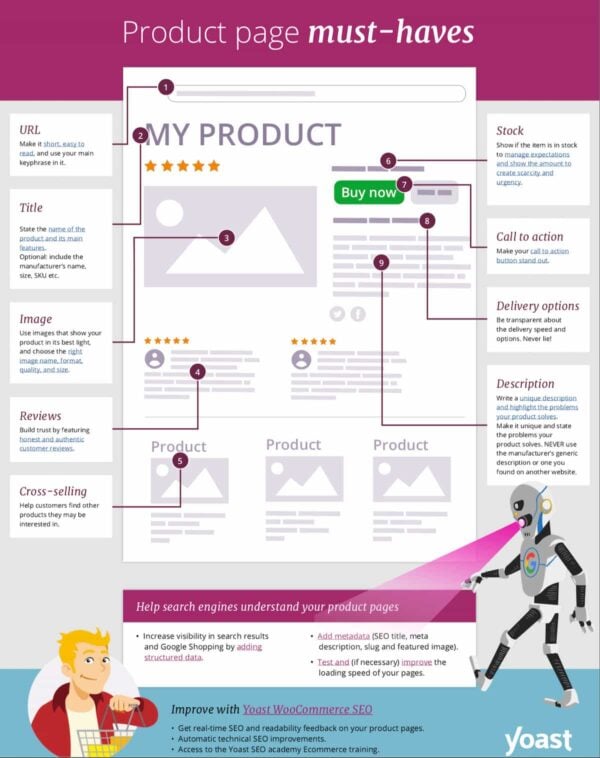
Read on: 7 ways to improve product descriptions in your online store »
Originally posted on Yoast.




